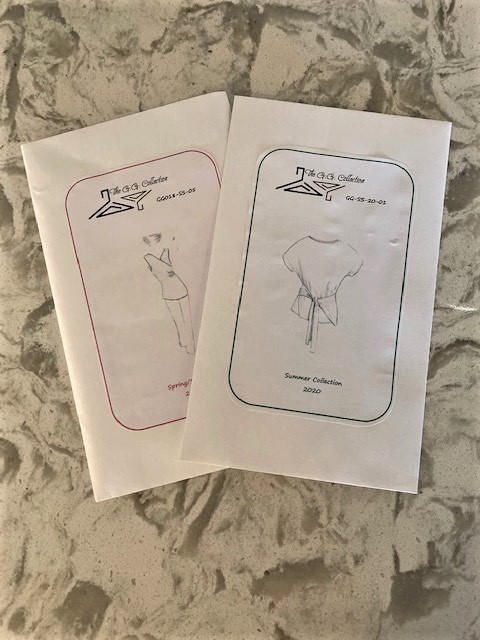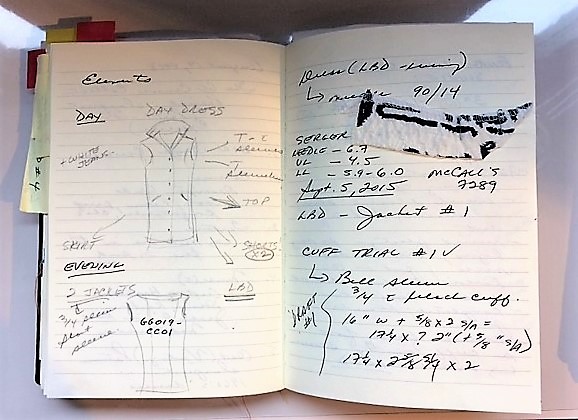I think it’s safe to say that the part I like best about recreating ready-to-wear is the pattern drafting step. When I was in high school, I loved geometry, and what’s more, I was good at it. I also loved analytical trigonometry and got a mark of over 90% in grade twelve. Just as a reminder, trigonometry is “… a branch of mathematics that studies relationships between the sides and angles of triangles…” Flat pattern drafting requires all that on top of the creative aspect. I suppose all those angles and calculations are right up my alley!
In any case, as I move into part 2 of my recreation of a low-quality-but-interesting-design shirt, I am moving from design copying to pattern drafting to fabric cutting and beyond.
When we last talked (okay, I did most of the talking), I had slapped a few grainlines on the pattern pieces, trued up the seams and began to think about the fabric.
The original (cheap) shirt was made from polyester, as is the usual fabrication for Light-in-the-Box online offerings. Although it looks relatively good at the outset, these knit polyester garments quickly develop those little pills that we all hate so much. In truth, taking out that battery-operated lint remover that our son likes to call a “sweater muncher” and applying yourself to the removal of said pills, can be rather meditative. And who doesn’t like the finished product? The problem is that with these cheap fabrics, the pills just keep coming back.
Then add on the problem of breathability, or in the case of the top in question, lack of breathability. What you are left with is an interesting, summer-worthy top that I can’t even consider wearing here in Toronto. It’s been over 27 Celsius (80 for the Fahrenheit people among us) for weeks and is only getting hotter, where it will stay until late September or thereabouts. The goal, then, is to reproduce the design in a better fabric.
Forced into online fabric shopping by the virus-that-shall-not-be-named, earlier in the season, I ordered a length of a linen-blend jersey in a cosmetically-enhancing pale peachy-pink.
I had this project in mind for it, and when it arrived, I was a bit hesitant because of how thin it is compared to its original version, although I realized that if I tweaked the sizing downward, it just might work. This, of course, is my main objection f online fabric shopping. I do it, but I always recognize its limitations. I would always prefer to take a walk downtown to the fabric district than shop online, but I’m happy I have the option of online!
As a result of the fabric’s weight and stretch factor, I decided that it was best to cut it out in a single layer.

I know so many people who sew avoid this like the plague, but it is truly the only way to come close to staying on grain with these kinds of fabrics. And I’m sure we’ve all experienced a cheap T-shirt or two that went all wonky after a wash or two. This is usually because it wasn’t cut on the straight of grain.
After cutting and marking, I had the good sense to stabilize the entire dropped shoulder seam with knit-n-stable tape. I also stabilized the portion of the side seams where the ties would be enclosed.
I whipped on my favourite sewing machine piece – my trusty walking foot – and got started. The original had serge—and-turned hems. I decided to take it up a notch and double turn all the hems. I didn’t go all the way to double-fabric-turned ties, though. In a future project, however, I might go the extra mile.
Well, she’s finished now. It had its first outing yesterday as we wound our way through downtown and the University of Toronto campus on our daily 5-7 km walk.

I think it worked out well – at least well enough that I created a final pattern to keep among my collection of GG originals!

This is the second such piece I’ve recreated, and I’ll probably do it again. How about you? Any design copying in your future? Stay safe!














































You must be logged in to post a comment.